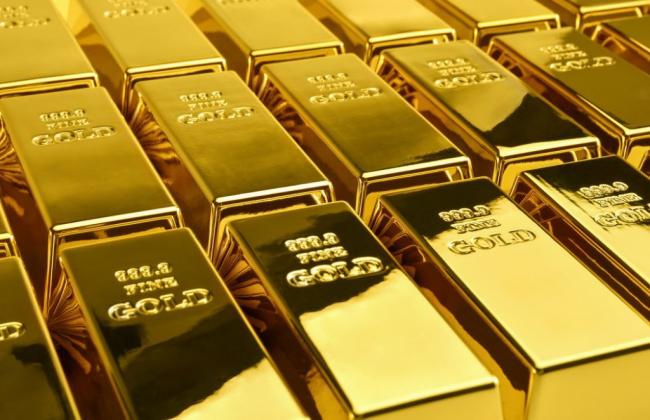China is the world’s largest gold producer and the world’s second-largest gold consumer, and given that it is also the world’s most populous country, it is no great surprise that China has won on the front line of gold demand. For many years, China has been the largest producer and consumer, and with an 11 percent share of global mining production, it is still the leading producer nation. Some argue that China’s dominance is due to the involvement of gold mines in African countries such as Tanzania, but China’s gold production matters to both the Chinese and other nations.
China overtook South Africa as the world’s largest gold producer in 2007 and has not overtaken it since. China is the world’s largest gold producer and produced 40.3 tonnes of gold in 2012, an 11.7% increase over the previous year.
We offer the best gold prices for cash and jewelry, help you sell diamonds, and connect you with bullion vancouver, gold coins, and diamond buyers.
The country produced 25.3 tonnes of gold in 2011-12, down four percent on 2010-11. The northern African country of Sudan is second on the list with a gold production of more than 76 tonnes in 2019. This is a significant decrease from 93 tonnes in the previous year and 107 tonnes in 2017.
The north-east African country of Sudan claims an annual gold production of 120 to 200 tons. Sudanese gold has been found over the years in the Arab region of Nuba Mountains, in the Flood Plains of the Nile, in quartz veins in Obaidiya and the Blue Nile region in northern Kurdufan. Africa’s largest country by area, Sudan, has gold mines, including Sudan’s Arab Mining Company’s Hassai Gold Mine and Canada’s La Mancha Resource Block 14, an open-pit mining project operated by Canada’s Orca Gold.
It is worth noting that Ghana is Africa’s second-largest gold producer, having outpaced South Africa in recent years. Mexico is another notable gold producer, pushing South Africa out of eighth place with a production of 12.5 million tonnes in 2018.
Although Mexico is primarily known for its silver mining, it also plays an important role in gold production. While the country is plagued by below-average gold prices and sophisticated gold mines that have caused production problems, gold and silver accounted for more than 50% of Mexico’s total metal production in 2017. The Olympiada mine, operated by Polyus Gold, is Russia’s largest gold producer and has produced 720,000 tonnes of gold since 2011.
According to the World Gold Council, China is the world’s leading consumer of gold jewelry. Since gold mining began in the 1970s, gold production in China has been growing rapidly. The country is currently the second-largest gold producer in the world, producing 420 Mt in 2019.
To determine which country controls the world’s gold, Wall Street has reviewed 24 / 7 data on each country’s gold reserves in metric tons from January 2020 onwards by the World Gold Council. Many, if not all, of the countries on this list are among the richest nations in the world and are able to buy substantial gold reserves. Banks around the world buy gold every day, and this list mentions the ten countries with the largest gold reserves. Gold is a unique metal.
While the UN accounts for most of the world’s wealth, gold production varies between countries. Uzbekistan has long been a champion, but South African gold production in a variety of dozens of shades is not unprecedented, nor are many gold-rich countries. In 1970, South Africa produced 995 tonnes of gold or two-thirds of the world’s 475 million ounce production.
South Africa has been for decades one of the world’s largest gold producers, but its gold production has dropped by 85 percent since 1980. In 2019, a worldwide gold mine production of 34,637 tonnes was reported, a decrease of one percent compared to the previous year and the first year-on-year decline in production since 2008. South Africa’s gold production also declined in 2019, falling to 11.7 million tonnes from 9.0 million tonnes in 2018.
On the other hand, several nations have emerged in recent years as fast-growing gold producers. South Africa, for example, is still the country with the highest gold production, but annual production has declined since 1,000 tons were dug in the 1970 “s. The country was once a world leader in gold production, but after producing 1,000 tons of gold in 1970, its volume has declined.
Gold production increased in 2016 and 2017 – by 28.77 tonnes – and saw a sharp increase in gold production in 2018, which coincided with a rise in the price of gold. S & P analysts fear Australia will run out of resources in the next few years, predicting a potential 19.7 tonnes production decline and a slide from the top 10 gold producers list.
Australia has had seven consecutive years of output growth of 4 percent in 2019. Much of Europe’s gold comes from Russia, which has been steadily increasing its production every year since 2010. In 2019, Russia overtook Australia to become the world’s largest producer.
The Russian government, of course, buys two-thirds of the gold produced. The Muruntau open-cast mine is one of the world’s largest gold mines and contributes about 70 percent of the annual production of the country.
One of the largest gold mines in the world, the Grasberg mine, was opened in 1980, but dates back to the Ertsberg mine discovered in the early 1900s but opened in 1973 only. It is believed to have the second-largest gold reserves in the world and contributes to the majority of Indonesian gold production. Southern Ghana was once considered one of the world’s best gold mining regions and was once one of the world’s largest gold producers, but production of the mineral has declined in recent years.
